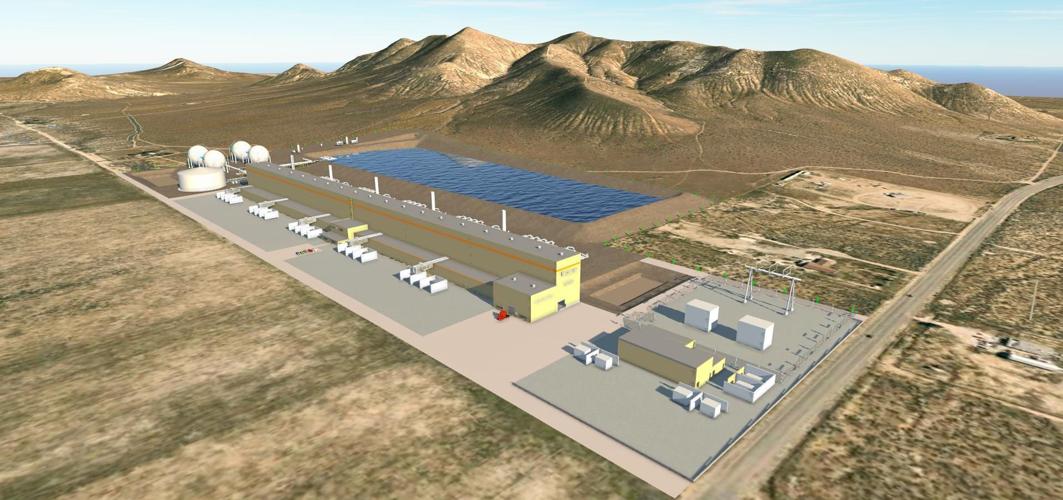
The Canadian company behind a compressed-air energy storage proposal in eastern Kern is asking state regulators for more time to work out and possibly relocate the $1 billion-plus project in response to unfavorable geological findings and other potential concerns.
The latest complications can be addressed, an executive at Toronto-based Hydrostor emphasized, and he insisted the company remains committed to siting the project inside the county. A pause in the California Energy Commission's review process, he said, would allow more time for the company to optimize what it sees as its global flagship.
"We remain fully committed, believe me, to Kern County and this project," said Curt Hildebrand, the senior vice president leading Hydrostor’s development efforts. "It's easier to pause the process now than it is later."
The Willow Rock Energy Storage Center would inject air deep underground to be stored under hydrostatic pressure. Then, when renewable energy sources come offline and the state power grid calls for electricity, compressed air released upward would power turbines feeding electricity, through nearby interconnections, to electric transmission lines.
State officials are anxious for projects like Willow Rock that can help balance California's energy supply by delivering large amounts of stored electrical power for up to eight hours at a time — at least double the duration of most utility-scale battery storage projects. Hydrostor hopes to win a state subsidy in the tens of millions of dollars.
Hydrostor has proposed a 500-megawatt, 4,000-megawatt-hour facility near Rosamond that would power about 400,000 homes for eight hours, making it the largest project of its kind. The company has estimated construction would employ 800 people at peak then provide permanent jobs for the equivalent of 25 to 40 full-time workers.
Already the company has announced a $250 million commitment from Goldman Sachs, as well as a 25-year, $1 billion agreement to sell 40% of its energy storage capacity to Monterey-based Central Coast Community Energy.
A June 23 memo by staff at the energy commission said work has begun internally on a preliminary assessment of data from the project applicant, a local subsidiary of Hydrostor. It said the company is working to finish a geotechnical evaluation and a survey of biological resources, the results of which are “expected to result in project description changes.”
The memo noted Hydrostor is looking at alternative facility configurations, cavern engineering options and alternate sites. The company gave no definite timeline for selecting the best path forward, staff reported as it recommended a committee of the CEC approve a pause in active work on the review. The idea is to resume the review after Hydrostor submits a new proposal with the geological and engineering reports necessary to “confirm site viability for the next iteration of the project design and location.”
The state’s review in advance of a decision on whether to certify the project began in mid-July of last year and was supposed to take 12 months.
Hildebrand said the company supports the proposal to pause the state review, which he said would not weaken Hydrostor’s commitment to the project.
He addressed each of the delays referenced in the CEC staff memo, saying Hydrostor is working to design the project to accommodate nearby residents who have an interest in the project’s visual and sound impacts. He added the company is “making good progress” on that work, just as it is with regard to addressing water-use impacts.
Work also continues on addressing various potential impacts to endangered and threatened species and other resources in the area, Hildebrand said.
He noted the company has drilled two bores to learn more about the geology of the area, and the results are “somewhat still under analysis.”
“The design of the caverns is not exactly as we had envisioned originally,” he said.
Hildebrand said Kern County government has raised some issues with the project, which he declined to identify but said they are “reasonable and relatively modest compared to most California Energy Commission projects.”
“Overall, the feedback has been extremely positive, and Kern County has been very good to work with,” he said, adding, “We understand their needs. We’re prepared to meet a lot of those needs.”
Kern County’s top energy permitting official, Lorelei Oviatt, declined to comment on the project, deferring to the energy commission.
Hydrostor intends to site the project no more than 20 miles from two power interconnection points in eastern Kern, Hildebrand said, emphasizing there is no thought of moving the project outside the county’s borders.
“We’re doing it diligently and prudent instead of quickly and imprudently,” he said. The CEC process is extensive, he added, “and the more issues you can take off the table up front, the better off you are in the long term.”
FacebookTwitterEmailPrintCopy article linkSave